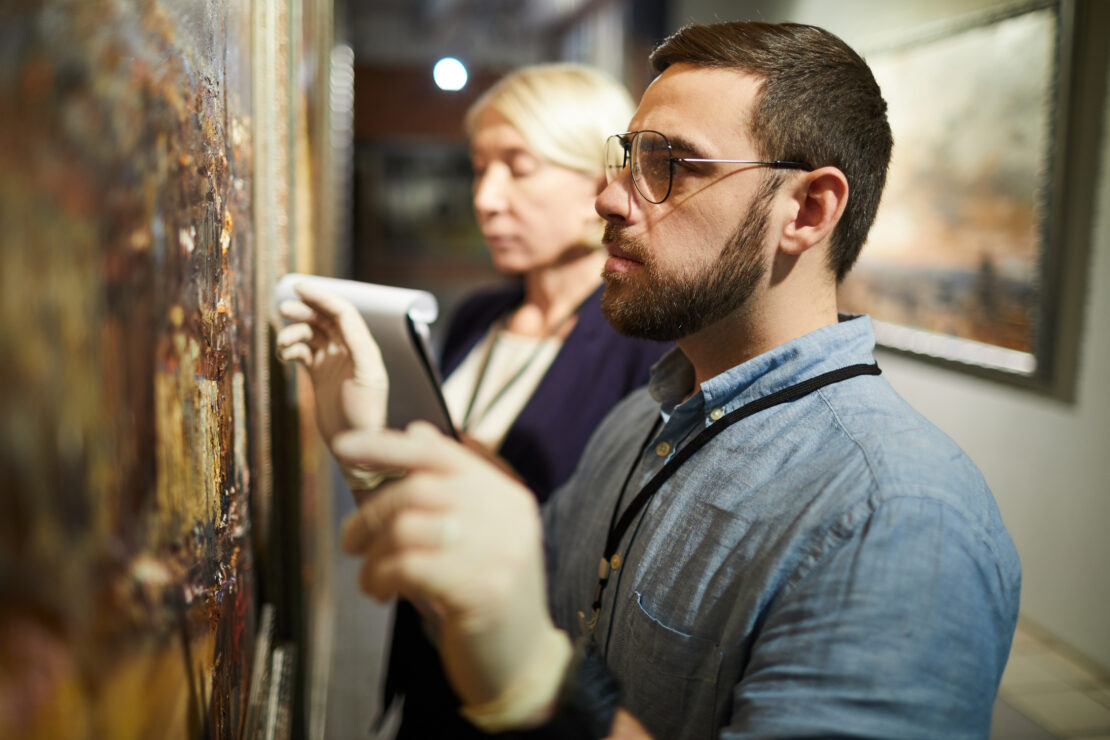It’s Not Right – Fakes, Fear and Litigation
“It’s Not Right”: Fakes, Fear and Litigation
It is no wonder authenticators are dwindling in numbers and appraisers, writers of catalogue raisonnés and just about everyone else in the art world seems to run in fear of litigation when there is doubt about the authenticity of a work of art. Getting it wrong, or getting it right, can be a potentially dramatic affair as was demonstrated at a recent conference in New York. On November 8th 2013, the Pollock-Krasner House and Study Center organized a Symposium – “Art From the Ground Up: The Protection of Cultural Heritage through Connoisseurship, Conservation and Authentication”. As a rapt audience of 60 scholars, museum professionals, scientists, appraisers, collectors, artists, representatives of artist foundations, US State Attorneys, journalists and perhaps even a forger among us gathered to hear 5 experts, the New York Post ran an explosive article titled: “CSI tests authenticate Pollock’s final work”. Describing the authentication of the last painting by Jackson Pollock after twenty years of debate, study, forensic analysis and lie detector tests, “Red, Black and Silver” was announced to be his last painting. (View article here) Despite overwhelming forensic evidence, Dr. Francis O’Connor, the first speaker at the Symposium, former head of the Pollock Authentication Board before it disbanded in 1996, doesn’t accept the authenticity verdict. Investigator Colette Loll Marvin systematically unveiled the detailed analysis of the painting, “Red, Black and Silver”, before dropping the bomb shell that this investigation changes the course of art history. Thus the debate between connoisseurship and forensic science continues. (View article here) “It’s not right”, as a connoisseur’s comment when suspicions about the authenticity of an artwork are in question, may be fine in the market place, but not in the courtroom. Today, despite the evidence collected for “Red, Black and Silver” described as a “triangulation of certainties” by Loll Marvin (data from the painting, the Pollock house and Pollock’s shoe) energetic debate continues. Rather than asking: “Is it a Pollock?”, an answer is more likely to come in response to: “What is the likelihood that it is not a Pollock?”. The expert might thereby safely avoid litigation. Fakes can have a significant impact on the art market. Blake Gopnick’s provocative op ed piece in the November 2nd 2013 New York Times, “In Praise of Art Forgeries”, suggests that “we may want to bless forgers for helping to tame our absurd art market. If speculators eventually are scared off by the danger of being stuck with fakes, prices may fall…. In a market depressed and made anxious by fakes, investors and private collectors may start pulling out, leaving more room for museums to buy at prices they can afford…”. With the depressed state of museum acquisition funds I think it will take something more miraculous than fakes on the market to make a serious dent in active museum acquisitions on either side of the border. (View article here) Several speakers reminded us that determining authenticity is like building a three-legged stool. The seat is AUTHENTICITY and the three LEGS are (1) connoisseurship, (2) historical research and provenance, and (3) scientific materials analysis. As the Symposium demonstrated, even with extensive materials evidence and two decades of study, debate over the authenticity of “Red, Black and Silver” continues. The environment is ripe with suspicion, caution and political alliances. Jonathan Allen, the Reuters journalist on the scene, reported Francis O’Connor’s reaction this way: “I don’t think there’s a Pollock expert in the world that says it’s a Pollock… I am not convinced”, thereby leaving the ‘connoisseurship’ leg of the authentication stool shaky. This statement has an immense impact on the market. The painting is held by Phillip’s auction house that apparently would list a reserve price of $20,000 if the work were to be “attributed to” and a reserve of $1 million if listed as “by Pollock”. (View article here) Authentication Foundations and Boards continue to disband to avoid litigation. Conservators and curators are not permitted to authenticate due to conflict of interest. Catalogue Raissoné work is compromised as the risk of establishing a reliable list of authentic works is challenged by ever increasing forgeries leading scholars to fear litigation. Purchasers of fakes are often convinced they own an authentic work. Fakes exist and thrive in a complex web, including an artwork, forger, art dealer, forged and invented archival documents, fabricated and manipulated provenance, misattributions and more. Forgery succeeds on the strength of corruption of knowledge and not exclusively on the excellence of artistic execution. Stay safe by studying, following professional standards, reading the countless books and watching films on forgers, fakes and investigations, and hire only accredited professionals who stand by the highest rigorous standards. If a purchase or an appraisal of a work is being considered for which there are known fakes (Norval Morrisseau for example), verify with the accredited and legally authorized authentication board first. And for those who want to see the real thing, an “authentic fake”, an exhibition is opening in 2014. Colette Loll Marvin, the speaker who unveiled the results of the Pollock investigation has developed the exhibition, “Intent to Deceive: Fakes and Forgeries in the Art World”, organized by International Arts and Artists (IA&A) in Washington, D.C., opening in Springfield, MA in January 2014. It highlights 60 works of some of the world’s most well known forgers of the 20th century. Erica Claus, ISA AM Accredited
clausappraisals@icloud.com


